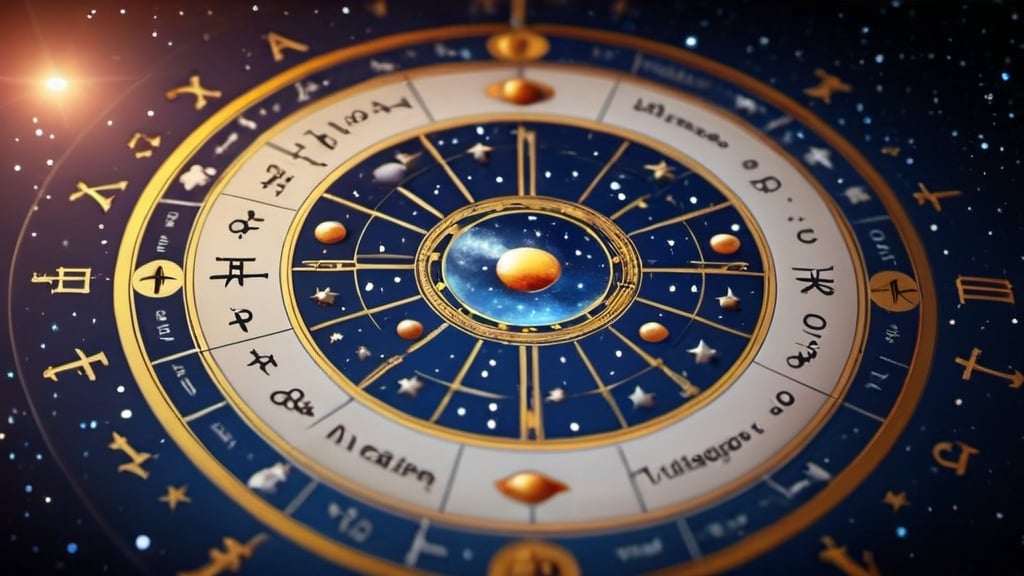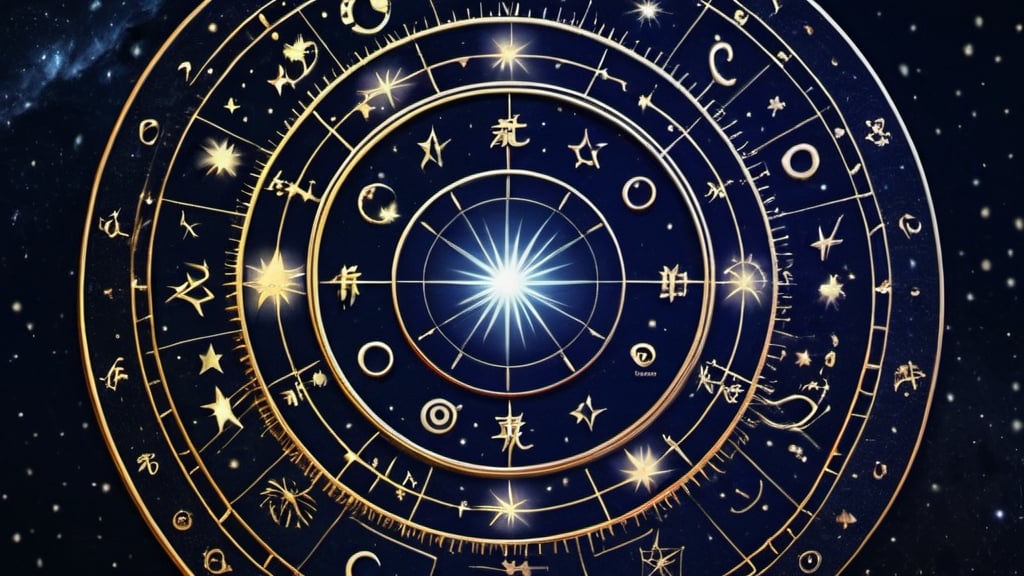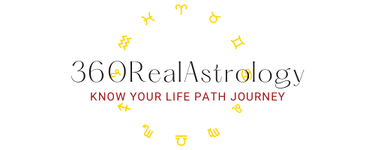Mastering the Stars: A Comprehensive Guide to Astrology for Beginners

1. Introduction
Note that without an understanding of the symbols that astrology utilizes, astrology is nothing. Ever so often, a symbol like the planetary glyphs cycles into a new popular meaning and belief in modern culture, and the original intent is lost.
Anglo-American culture has inherited the astrological tradition of ancient Mesopotamia through its adoption by Hellenic (Greek) speaking culture during the Hellenistic period, from which it spread to the Roman world, to be adopted more or less unchanged by medieval and Renaissance Europe. This is the tradition which is primarily the focus of modern astrologers. Through this long journey through time, the astrologer is faced with a trail of accurately inconsistent symbolism and an art of rationalization which has tried to keep up with the changes.
It must be noted that the study of astrology is a somewhat exotic quest. The astrologer is a student not only of the symbols and metaphors of ancient myth and legend, but also of the traditional science of astronomy, whose rules are complex and exacting. Astrology itself has an extensive tradition in every civilization which has left written records and sure which stretches over at least five thousand years if one counts the traces of astral cults in Paleolithic hunter-gatherer religions. Astrology has gone through an ebb and flow of orthodoxy and heterodoxy over this time.
In spite of the best efforts, there will still be some loose ends. In particular, the discussion about the history and tradition of astrology has intentionally been left a bit brief and loose. A standard treatment of the history of astrology and its tradition would require an effort the size of several textbooks and is far beyond the scope of an introductory guide. From this, a concise guide to astrology and its tradition is offered as a suitable starting point for a more in-depth study.
The text you will read through this effort has been developed to contend with an age-old problem presented to astrologers – to document and systematize key information about astrology and astrological tradition so the reader can grasp the fundamentals and then confidently build upon that base with further knowledge. A further aim was to provide a solid foundation and understanding for our future work involved in astrological technique and for all astrological counseling.
Welcome to Mastering the Stars: A Comprehensive Guide to Astrology for Beginners.
1.1. What is Astrology?
Although its popularity is waning in the modern world, people have always been drawn to astrology in search for answers to life’s big questions and as a guide to the meaning of life. Astrology is ultimately a quest for meaning. For that reason, it is ever expanding and evolving as a subject. Astrology represents the experience and wisdom of thousands of years and is a tool to be used in understanding human nature and in giving greater scope to the purpose and potential of life.
Astrologers will then make predictions or offer guidance based on the trends and themes found in the chart, and progressed charts are also used to keep track of and predict future trends. In the search for understanding and proof that astrology works, astrologers will sometimes use astrology to gain an understanding of a person or event for which they know nothing, or conduct blind tests on themselves or others.
This cycle is divided into 12 equal parts, each of which is associated with an aspect of human life, as well as specific characteristics. The idea behind tropical astrology is that people will reflect the cycle of nature. A chart is a graph of where the planets are in relation to the zodiac at a particular time and place. Astrologers use these charts to gain an understanding of a person’s character, recognize times in a person’s life when a certain type of event is likely to occur, and to find the best time to initiate a project. Personality and the flow of events are understood through the position of the planets in the zodiac signs and houses.
Western tropical astrology is based on the movement of the Sun across the sky over the course of a year, a cycle that more or less aligns with the seasons. Zodiac signs are based on the position of the Sun in relation to the stars at the time of a person’s birth. It is called tropical astrology because of that correlation with the seasons. This is the most popular form of astrology in the Western world and it is the astrology used in this book.
At a basic level, astrology is symbolic logic, a language of symbols and metaphors which is used to gain an understanding of self, others, and the environment. Techniques and systems used by astrologers can vary from culture to culture, however some of the most popular and enduring are Western tropical astrology, Chinese astrology, and Vedic astrology.
Astrology is based on the principle “as above, so below”, i.e. the positions and movements of the celestial bodies are thought to influence events on Earth. Because the birth of a person is believed to have a long-lasting effect, the position of the planets in relation to the zodiac at the time of the birth is thought to have an influence on the person’s life, although clear evidence of this is lacking.
Astrology is, put simply, the study of the correlation between the astronomical positions of the planets and events on Earth. Astrologers believe that the positions of the Sun, Moon, and planets at the time of a person’s birth have a direct influence on that person’s character. These positions are thought to affect a person’s destiny, although free will also plays a large part.
1.2. Why Learn Astrology?
Astrology isn’t only for understanding oneself, but also for understanding circumstances. By learning electional astrology, you can take control of the situation and start the activity at the best moment for effective results. This does not mean that life will be totally controlled because there are always possibilities of counterproductive free will by others, but at least you can optimize the possibilities. In horary astrology, queries for missing items, understanding the condition, and the best way to cope with the problem can be answered. A physician might use medical astrology, and someone who is a professional in a particular field may use a certain branch of astrology for better results in their work. All of these beneficial results naturally require an understanding of astrology.
Astrology can be learned to boost self-understanding. When you understand yourself, you’ll be in a position to develop what can be improved and enhance what can be perfected. By learning astrological meanings, you can comprehend the experiences that have caused you to act in a particular way. You can understand your potentials and what you truly want in your life, and how you can accomplish it. You can compare your astrological profile with other individuals and predict the best way to get along with them. The more you understand about yourself and other people, the more freedom you’ll have to decide on the best direction for your own good. Astrology, the understanding of influences and what they bring, will give insight into when and why you feel motivated to believe or act in certain ways. Fortunate or unfortunate periods in your life can be seen from astrology transits. When you completely understand the cause and nature of issues, it will be easier for you to discover the solution.
1.3. Brief History of Astrology
On the practical level, it will always give you insight into a situation and the underlying dynamics that are present. It works swiftly and we can assess the situation without necessarily having met the individual. With their permission, you can do a chart for them and surmise the situation. Astrologers all have their various specialties and will use their intuition and insights derived from the birth chart to help guide the individual to healing and growth.
Astrology, like language, is a system of symbols – a language of images and metaphors. It is a system for understanding ourselves, each in our own way, within a larger context. Astrology is not fortune telling. The birth chart is a tool that can be used to guide you, but it is not to be used to affirm a deterministic view of life. A chart done for the moment of a question, while useful, does not in any way usurp the need for each of us to make our own decisions at each moment in time. Rather, it affirms your freedom to be able to form the question. Astrology is based on the principle of “as above, so below”. The cosmos or macrocosm is correlated to the individual or microcosm because the same universal principles work on all levels.
2. Getting Started with Astrology
To get started with astrology, first you’ll want to set aside all preconceived notions and clear your mind. This is where you start to learn the basics, and it is essential to the beginner’s understanding. The first thing that is beneficial to know about astrology is that the planets do not make anything happen. This can be a shift in perspective for many, as we are inclined to attach worldly events to planetary behavior, such as attributing love and war to the actions of Venus and Mars. The truth is, events on earth are symbolized by the configuration of planets; we are drawn to act under specific energies in the sky. These planetary energies are not forces imposed upon us, rather, they are influences that we can learn to act with, or against. It is comparable to the concept of weather. If the weather is nice, we have the opportunity to go out and enjoy the day. If the weather is gloomy, we may decide that it’s best to stay inside. We always have a choice, and the weather merely provides us with the option that best suits the conditions. Through understanding the planetary influences in our birth charts, we gain insight to the options that are presented to us in life.
2.1. Understanding the Zodiac Signs
The modalities in astrology are the three different ways that a sign can express its energy. They are cardinal, fixed, and mutable. Each modality contains four signs, each belonging to an element. The cardinal signs are Aries, Cancer, Libra, and Capricorn. The fixed signs are Taurus, Leo, Scorpio, and Aquarius. The mutable signs are Gemini, Virgo, Sagittarius, and Pisces. Usually, signs of like element are of different modalities. For example, the cardinal signs enable new beginnings and they lead the zodiac. The fixed signs are more steady and they consolidate what was started by the cardinal signs. The mutable signs come at the end of a season and prepare for the season of the next element. The modalities provide an explanation of how the energy of each sign develops and relates to the neighboring signs.
Each zodiac sign has a symbol and an element. For example, Aries is a ram and is a fire sign. The fire signs in astrology are Aries, Leo, and Sagittarius. There are three fire signs and nine signs altogether. Each sign is affiliated with one of the four elements: earth, air, fire, or water. There are three signs affiliated with each element. The elements help describe the temperament that a sign has. For example, fire signs are impulsive and intuitive. The earth signs are practical and cautious. The air signs are a lot of the time in their head and are thinkers. The water signs are emotional and intuitive.
The elements are a very useful and fundamental principle in understanding the signs and understanding people. They can help explain why two individuals are either very compatible or very clashing. For example, a marriage where both individuals are fire signs is likely to be very passionate but may have fiery arguments. An individual of an air sign who is friends with someone of a water sign may find that they can always talk to the person about their feelings. Knowing the elements is very effective for understanding the compatibility between the signs. It can usually be said that individuals of like elements will get on well and individuals of unlike elements will not get on so well.
2.2. Elements and Modalities in Astrology
Cardinal Signs: Aries, Cancer, Libra, Capricorn The cardinals are the instigators of the zodiac. They are creative, and rather than carrying out orders, will take the initiative to get things going. They are bound by their own energy to their goal, which can sometimes add an air of impulsiveness to their actions. The cardinals are leaders in their own right but can sometimes be overbearing or tyrannical. They are happiest when taking the role of the pioneer or pioneer.
An understanding of the twelve zodiac signs will help you to understand the nature of those close to you and what makes them tick. It will also bring greater understanding of your own character and an awareness as to why you react in certain ways in particular situations. People are not just one-dimensional, and some of the nuances of behavior and character can often seem contradictory. It’s still okay to blame the planets for that one! Each zodiac sign has its own distinct personality and, as a result, will interact with the world and be motivated by different things. Each sign can be simplified into a quality and an element. The Qualities are the three basic attitudes people have toward a goal. The Elements are a little more complex, and I will devote the rest of this section to describing how they manifest in the signs.
Understanding the Zodiac Signs
2.3. The Importance of Birth Charts
A birth chart can tell you a lot about yourself, and it is an incredibly useful tool for those who are new to astrology. A birth chart is constructed using information about the date, time, and place of your birth. At the exact moment of your birth, the heavens were abuzz with radiant energies, and this is what your birth chart taps into. By comparing the position of the planets at the precise moment of your birth to their position at the present time, astrologers can reveal detailed information about your personality, your life path, and the potential destiny that is available to you. This is sometimes known as natal astrology, and many people believe that the information provided by your birth chart is incredibly accurate, useful, and enlightening. By understanding the different influences that have affected you at various times in your life, you should be able to take control of your destiny and make well-informed decisions. In short, a birth chart is a celestial snapshot of the moment you arrived on this earth.
2.4. Exploring Planetary Influences
Mercury is the planet nearest to the sun and has an orbit not much greater than 3 months. It has a strong influence in Gemini and, to a lesser extent, Virgo. In myth, Mercury is the messenger of the gods, and this is reflected in astrology where it symbolizes the mental process and the manner of communication. Its nature is generally considered unprincipled, and it takes on the qualities of other nearby planets; this makes it a tricky planet to interpret.
The Moon, Earth’s only satellite, represents the more unconscious mind, which reacts and responds to the environment and the outer personality. The moon shows our habits, automatic reactions, and our soul’s condition. The position of the Moon indicates our emotional state and how we form and share emotions. The moon is also very changeable, and a poorly aspected moon can indicate emotional turmoil.
The Sun or Sol is the source of light and heat for the solar system. In astrology, the Sun is thought to represent the core of an individual, their will, their sense of vitality, and their growing sense of identity. It indicates the basic direction a person should follow, to the end of fulfilling their own potential and the means by which they should do so. The position of the Sun is very important, as it can show a sense of introversion or extroversion, and whether the individual will shine in life or be forced into a position beneath their natural abilities.
The factors described above are compounded by the position of the several planets. Planets may be hopefully located, an important aspect, or detrimentally placed with positive or negative implications. Planets also modify the flavor of a sign, a house, or aspect through the concept of rulerships. To begin with, planets represent basic urges, how the energy pattern expressed by the sign is used.

3. The Basics of Astrological Interpretation
The Moon sign represents our emotional nature and is fundamental to the understanding of the individual. The sign of the moon shows how and why we go about getting our emotional needs met. The Moon has a strong connection to the past. It represents early upbringing and the relationship with the mother. The aspects to the Moon further add to the complexities of our emotional selves. For example, a person with Moon in aspect to Venus would be very sociable and indulging with their emotions, seeking comfort and security, while someone with Moon in aspect to Saturn may have hardship and feel restricted emotionally.
The Sun sign is probably the most familiar to the general public. It is usually taken as the astrological birth sign and represents the sort of person you are learning to be. The Sun is your deepest potential and realization. It is what you are striving to become. The Sun is also associated with your individuality and thus is often linked to career or vocation. It also rules the relationship with the father and men in general. By analyzing the sign and the aspects to the Sun, valuable information can be gleaned. For example, a person having the Sun in aspect to Neptune would signify a struggle to clarify who they are, or where the Sun in aspect to Mars could show the relationship with the father being pushy or overaggressive.
Astrological interpretation is the process of delving into what the celestial placements mean. There are many ways in which an astrologer can interpret this information. The following is a guide to the basic methods that an astrologer would use with the natal chart. The first steps include analyzing the Sun, Moon, and Rising signs.
3.1. Analyzing Sun, Moon, and Rising Signs
The combination of the sun, moon, and rising signs fully illustrates the various character aspects of an individual and how they portray themselves to others.
The rising sign, or ascendant as it is often called, is the sign that was rising on the eastern horizon at the time of birth. The rising sign modifies how the rest of the chart is expressed. It indicates the way an individual reacts to new situations, people, and their environment. Often, it’s how others see this person.
The moon sign indicates the desire for personal satisfaction and a sense of contentment. It is also another indicator of general character. The moon sign is the position of the moon in one of the twelve zodiac signs at the time of birth. Often, when the sun and moon signs are in conflict, an individual will feel uncertain about their general characteristics. This is because the inner self is conflicting with the outer self.
The sun sign is the most generalized characteristic of a person’s personality. It is determined by the position of the sun in one of the twelve zodiac signs at the time of birth. The sun sign indicates an individual’s general nature.
The sun, moon, and rising signs: what are they and how are they different from one another? These are the more personal aspects of astrology, revealing an individual’s inner self and illustrating how they interact with others.
3.2. Exploring Planetary Aspects
An opposition is when the planets involved are directly across from each other (180°). This is said to be the most difficult aspect to integrate, and depending on the planets involved, it can indicate inner tension or tension in outside events or people. Oppositions are usually bad but can be useful if they are ties between two conflicting elements or modes.
The conjunction is said to be the most powerful aspect. A conjunction is when two planets are in the same sign or are very close in degree (orb). This aspect intensifies the nature of the planets involved, and depending on the planets and signs involved, it can be either good or bad. Usually, a conjunction to a benefic planet is good, and a conjunction to a malefic planet is bad.
Planetary aspects are simply the relationships the planets have to each other. There are said to be good and bad aspects between the planets, and to understand this, you need to understand the nature of each planet. Aspects can be separated into two groups: Ptolemaic and modern. Ptolemaic aspects are those discovered by Ptolemy and are still widely used today. These include the conjunction (0°), sextile (60°), square (90°), trine (120°), and opposition (180°). Modern aspects are usually minor, and hard aspects usually indicate issues, while soft aspects usually indicate talents.
3.3. Identifying House Placements
Houses are just as important as signs and are their own separate entity. Where a planet can influence a person to act a certain way, the house that the planet occupies is where this action will take place. The 12 houses represent a specific area of life’s activity. A planet is in a house for a certain period of time, and the house is where the planet’s energy will manifest and be most noticeable. The sign on a house cusp represents the way that energy is expressed. For example, if Mars is in the 7th house, there may be much forthright energy in matters to do with relationships. If the 7th house has a Taurus cusp, this energy will be expressed in a slow and steady manner. Below is a brief description of each house and what it represents. Keep in mind that this is a very basic description just to give you an idea. Like signs, the more planets that reside or are in aspect to a house, the more activity is associated with the house’s agenda. More house activity increases the importance of understanding the house and adds even more complications to interpreting an overall picture.
4. Advanced Astrological Techniques
Predictive astrology, as the name suggests, focuses on making predictions about future events, people, and environments. It is also about understanding past and current events in a person’s life. The central point of predictive astrology is the prediction of future events. In order to make accurate predictions, astrologers must have an understanding of the planets and their functions in signs, houses, and aspects. When the astrologer observes a set of planetary phenomena which is similar to a set of past events, he will be able to predict what will occur when the same kind of planetary phenomena occurs. It is important to realize that events are not fated to happen, but rather there are various probabilities which can be symbolized by the positions of the planets. And it is always possible to change the forecast of an event by changing oneself.
Predictive astrology is divided into two main types of techniques, although there is a similarity between them. The first is the transit reading, which is an astrological statement concerning a natal chart, drawn up for the time of a specific event, usually the beginning of an enterprise. The astrologer studies the progressed chart in comparison with the natal chart. The aim of the astrologer is to gauge what effect the event will have on the native and to forecast the outcome of the event. The second is the setting up of a chart for a specific event and is done to find out the nature of the event and the probable outcome. This is used in electional astrology.
4.1. Predictive Astrology: Forecasting the Future
Progressions involve the use of a “day for a year” ephemeris to calculate the movement of the progressed planets, and there are many different systems and methods used in progression. The typical aim of progressions is to create a symbolic unfolding of the birth chart, and from this to gather psychological insight and predictions for the future.
Transits involve a comparison of the current positions of the planets to the positions of the planets in the natal chart. A planet is said to “transit” a certain point when it makes an aspect (a certain angular distance) to that point. Depending on the nature of the aspect and the planets involved, this will have varied effects, all of which can be determined by the natal of the people or event in question. Typically a “transit” is only considered to have influence if it is within a one-degree orb of exactness. The effects of a transit are often said to be felt most strongly at the time when the aspect is exact, but it is also considered to build up in the time before the aspect is exact, and to linger for a certain period of time afterwards. The length of time that a planet will spend transiting a certain person’s planet or area of life, and the nature of the aspect involved will give an indication of the severity and duration of the effect.
In predictive astrology, the astrologer makes a detailed analysis of transiting planets in relation to the natal chart, progressions, and other methods of correspondences in order to determine future trends. This often involves the use of an “ingress” chart calculated for the time that a planet enters a new sign or house, and is akin to a forecast. There are many different methods used by astrologers to create a predictive analysis, but some of the most common methods are transits, progressions, solar return charts, and solar arc directions.
4.2. Synastry: Understanding Relationship Compatibility
This discipline is complex and is intended to give a point about the nature of the relationship itself. In the words of E. H. Bailey, synastry deals with the comparison of two or more astrological charts to analyze the relationship between two or more people. This often involves a romantic relationship but can be about the relationship between a parent and child, two friends, or work colleagues. Each individual in the relationship is at the center of his or her own astral universe – the scheme of things. Each has his own orbit, poles, and axis. Planets are to be judged as to the part they play in the life of each individual.
The sum of the influences of one person’s planets on those of another will show the nature of the relationship at any one time. Any change in the pattern of aspects will reflect a change in the nature of the relationship, for aspects are the only method of interaction between the planets. Static and letter of the law traditional astrologers are concerned with natal influences. This focus may be advisable for showing a hypothetical pattern of future influences. However, the natal promises can only be judged by the events which they bring about. This being so, astrologers are better to be judges of deed than intention, and the sum of what a relationship brings to each individual can be judged by horary astrological method.
Astrologers adopting horary methods are interested in the sum of the influences at any one time, for the chart drawn is a birth of a question. Static astrologers fail on synastry because they are bad at shifting psychological gears. A bad aspect is an aspect bringing bad effects to the native of the horoscope who is judged by the ascendant. Any change in the nature of the relationship will manifest as an event in the life of the person. It is the nature of changes in synastry which affects the way the chart will be read. Any aspect which sets off one person’s natal chart will also set off the chart of another event chart. Runtime: 10 minutes.
4.3. Horary Astrology: Answering Specific Questions
The primary advantage to horary astrology is that it is concrete and specific. Instead of having a person describe some problem or situation of which they may or may not know all the details, the astrologer sees the question and the chart provides a snapshot of the conditions at the time. The astrologer is able to answer the question without bias or influence from the person asking the question. This is a considerable contrast to natal astrology, where the bulk of the clues must come from the person being analyzed. With horary, the astrologer jumps right into analysis. The certainty of the method can also be seen by the fact that if an event can have a chart (time and place), then a horary chart can be erected for the event. Horary is event-oriented and thus can give precise analysis for many types of situations. For its ability to answer specific questions and provide clear and concise analysis, horary astrology remains a valuable tool for the astrologer.
In performing horary work, the individual asks a question and erects a chart for the time and location of the query. Most commonly, this is used to answer a question of a pressing or urgent nature. The person asking the question is represented by the ruler of the Ascendant, and the thing queried about is represented by the ruler of the quesited. The results of the question are shown in the chart by the condition of the quesited’s ruler, or in horary terms, the Moon. The reasoning behind the Moon representing the outcome is that the Moon shows the changing conditions of things, or the passing of events. This is of particular concern to the querent, who desires an answer or solution to his questions. So, by the applying aspects of the Moon and the condition of the Moon, the astrologer interprets the outcome of the situation. The querent gains answers to his questions by the judgment of the astrologer in reading the chart. The chart is read by comparing the significators with a set of 12 rules, and the answering of the astrologer will ideally bring some of the relevant rules and planetary indications to light.
References:
Miraux, L. “Environmental limits to the space sector’s growth.” Science of The Total Environment, 2022. hal.science
Gracia, Anastasia, et al. “Analysis Of Implied Messages In The Film “Sing 2” Director By Garth Jennings.” UNDERGRADUATE STUDENTS’NATIONAL SEMINAR. 2022. stkippacitan.ac.id
Afshar, Saeed, et al. “Event-based object detection and tracking for space situational awareness.” IEEE Sensors Journal 20.24 (2020): 15117-15132. ieee.org
Abdullah, S. and Abu, M. “Heavy Silence and Horrible Grief: Reconstructing the Past and Securing the Future through Magical Realism in Joseph Skibell’s A Blessing on the Moon..” Ostrava Journal of English Philology, 2020. osu.cz
Wong, Michael L., et al. “On the roles of function and selection in evolving systems.” Proceedings of the National Academy of Sciences 120.43 (2023): e2310223120. pnas.org
Izzuddin, Ahmad, et al. “Cultural myth of eclipse in a Central Javanese village: Between Islamic identity and local tradition.” HTS Teologiese Studies/Theological Studies 78.4 (2022): 7282. ajol.info
Kutsch, Elmar, Ibrat Djabbarov, and Mark Hall. “How managers frame and make sense of unexpected events in project implementation.” International Journal of Project Management 39.5 (2021): 570-580. cranfield.ac.uk
Kirkman, B. L. and Stoverink, A. C. “Building resilient virtual teams.” Organizational Dynamics, 2021. researchgate.net
Antonsen, Erik L., et al. “Estimating medical risk in human spaceflight.” npj Microgravity 8.1 (2022): 8. nature.com
Seraphin, H. “COVID-19: An opportunity to review existing grounded theories in event studies.” Journal of Convention & Event Tourism, 2021. researchgate.net








Connect me